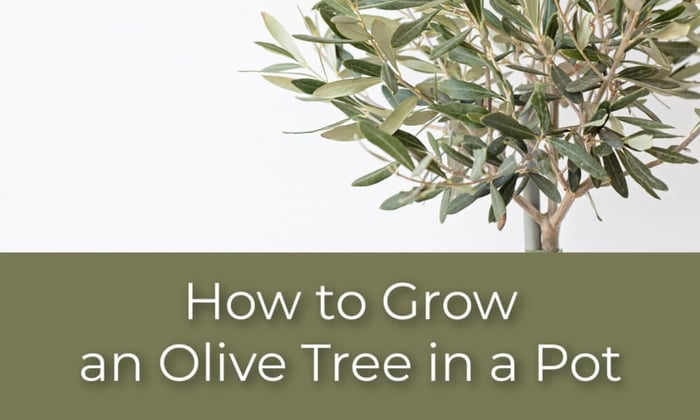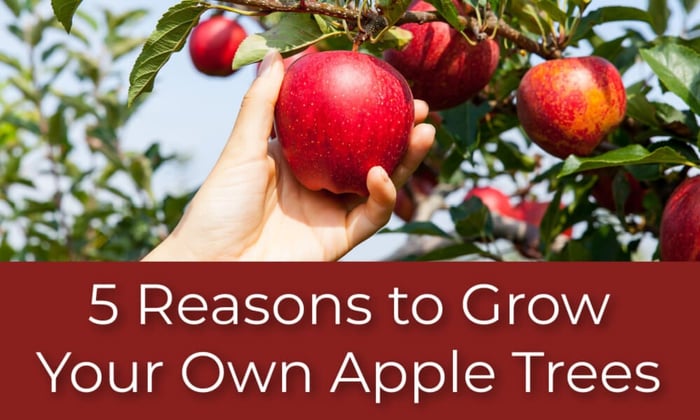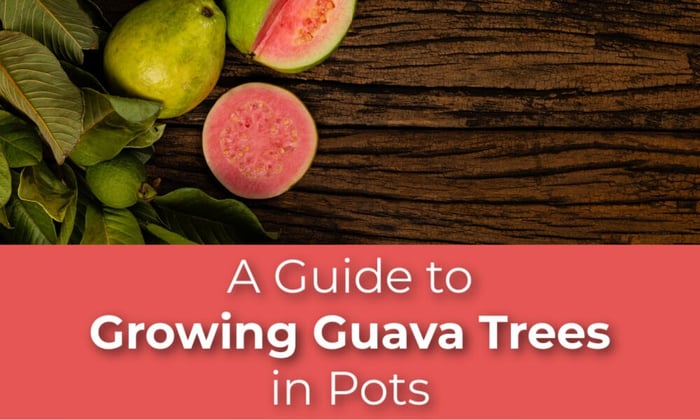Table of Contents
How to Grow an Olive Tree in a Pot.
Olive trees are a symbol of peace, longevity and reconciliation. In Greek mythology, the olive tree represents friendship. It can also be seen as a symbol of fertility, rebirth and healing. The beauty and grace of an olive tree as well as its deep symbolic meaning makes this tree one of the most popular to grow for home gardeners. The most straight-forward way to do this is to grow an olive tree in a pot or container.
Growing an olive tree in a pot instead of in the ground is the easiest way to control the size of your tree and its environment. This compact, containerized growing method allows for the successful cultivation of olive trees in various climates, and provides a range of benefits for you as a grower. Container gardening makes it easier to control your tree's growth, so that pruning and maintenance is less complicated. Additionally, potted olive trees can be moved to optimize sunlight and offer protection from harsh weather, ensuring their well-being year-round. This approach often leads to better disease and pest management. By keeping your tree in a pot or container, growers with limited space can enjoy the beauty of these iconic Mediterranean trees on patios, balconies, and front or back doorways. Here are some simple tips on how to grow an olive tree in a pot.
Choose the Right Olive Variety
Select a suitable olive tree variety for container gardening. Here is an Olive Variety Chart with more information about each variety. Olive trees grow best in USDA growing zones 8-11 or 9-11 (depending on the variety), with extra protection required if you live outside of those zones. All of the varieties that we offer can be grown in containers, but there are some varieties that grow faster than others. For compact olive trees, choose dwarf or patio varieties such as Arbequina, Manzanillo and our fruitless variety, Skylark.
Arbequina Olive Tree

$17.60
$22.00
--OVERVIEW-- On Sale! 20% off Olive Trees (ends 12/31/25) Our Best Selling Olive Tree! Arbequina Olive trees produce rich, buttery fruit- perfect for both home and artisan oil makers alike. Olive variety from Catalonia Spain. The highly aromatic fruit begins… read more
Manzanillo Olive Tree

$42.00
$65.00
--OVERVIEW-- Save 30% off select varieties while supplies last. See All Clearance Vigorous plant with a rising habit. The most important Spanish cultivar. Appreciated on the international markets for the recognizable shape of the fruit, the ease of removing the pit,… read more
Select a Suitable Pot
Choose a sturdy pot with good drainage. Olive trees have extensive root systems, so a container with a diameter of 10-14" for a primo starter sized tree like these pots will work well. Gradually increase the size of your pot as the tree grows.
Saturn Tree Planter 3-Pack

$20.00
--OVERVIEW-- 10.5" Diameter x 10.5" tall Planter Choose 3 Coffee Saturn Planters or 3 Navy Saturn Planters These planter pots are suitable for our primo and entry sized fruit trees. Poly containers made with recycled plastic material. Ships as… read more
Use Well-Draining Soil
To successfully grow an olive tree ina pot, it is very important to use a well-draining potting mix with good aeration. You can amend regular potting soil with perlite or pumice to improve drainage, or use something like our Primo Potting Mix, which is a mixture of bark and potting soil. Ensure the pot has lots of drainage holes to prevent waterlogged soil.
Primo DIY Citrus & Fruit Tree Potting Mix Kit

$25.00
--OVERVIEW-- Includes: 2- (8qt) Bags of G&B Orchid Bark and 1- (8qt) Bag of G&B Organics Palm, Cactus & Citrus Mix Primo Citrus & Fruit Tree Potting Mix is a 2:1 potting mix that is specially selected to provide the… read more
Planting the Olive Tree
To plant your olive tree in its new container, gently squeeze the nursery pot and ease your tree out of the container. The soil should be slightly damp (not wet or dry). Gently loosen the roots at the bottom of the plant to help give them easier access to the new potting soil. Fill your pot about 1/4 of the way with soil mix in the bottom of your pot and then settle your tree in the center. Backfill with more soil, tamping down to prevent air pockets. You can wiggle the tree around a little bit to settle it in. The crown of the roots should be just at the soil line. Water your tree thoroughly after planting to settle the soil and remove any air pockets.
Location and Sunlight
In order to grow an olive tree in a pot successfully, it will need plenty of sun. Place the potted olive tree in a sunny location, preferably where it will receive at least 8 hours of direct sunlight daily. Olive trees thrive in full sun.
Watering
Olive trees prefer to be kept consistently moist but not waterlogged. Water the tree when the top inch (2.5 cm) of the soil feels dry. During the growing season (spring and summer), you may need to water more frequently, as the potting soil will dry out faster than in the fall and winter. In the winter, reduce watering to avoid overwatering and potentially damaging the roots of your olive tree with oversaturation.
Fertilizing
Feed your olive tree with a balanced fertilizer formulated for fruit trees. Apply it according to the manufacturer's instructions, typically in the spring and summer.
Romeo Plant Food / Fertilizer (non-organic - 2:1:1)

$14.00
--OVERVIEW-- Romeo® Soluble Plant Food 24-14-14 in concentrated solid form. Suitable for application to trees and plants indoors and outdoors year-round. For application during normal watering. Higher Nitrogen fertilizer. Product of USA Available in 1 or 5 lb. bags We… read more
Pruning and Shaping
Prune your olive tree to maintain its shape and encourage productive growth. Remove dead or diseased branches and any excessive or wild growth. Pruning is typically done in late winter or early spring before new growth begins. Olive trees do not require heavy pruning to produce fruit. It is okay to prune to the desired shape, but keep in mind that olives fruit on branches that grew the previous season. Removing one-year wood will certainly reduce your fruit potential. However, you may want to remove crossing branches in the interior of the tree to create more airflow and to reduce chances of pests and diseases. That said, there are very few pests that plague olive trees.
Overwintering
Olive trees can tolerate light frost but may need protection if temperatures drop significantly. Move the potted olive tree indoors or to a sheltered area during very cold weather, or cover it with frost cloth.
Pest and Disease Management
Keep an eye out for common pests like aphids, scale insects, and olive fruit flies. Use natural or chemical controls as necessary, but be cautious not to damage beneficial insects.
Remember that olive trees are fairly slow-growing. You may see olives in the first couple of years of your tree's life, but it may take a few years before you see significant fruit production. With proper care, you can successfully grow an olive tree in a pot, and it can thrive and produce homegrown olives for you to enjoy with friends and family.




